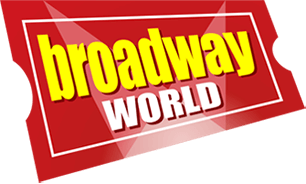Art Institute to Present New Edward Steichen Exhibit, 6/28-9/28
Throughout his extensive career, famed photographer Edward Steichen (1879-1973) championed photography's multiple roles-from his earliest efforts to promote American photography as an equal among the modern fine arts, to his groundbreaking work for the magazine industry. A new exhibition at the Art Institute of Chicago, Sharp, Clear Pictures: Edward Steichen's World War I and Condé Nast Years, on view from June 28-September 28, 2014, in Galleries 1-4, examines a crucial period in Steichen's career, when he rejected the painterly Pictorialist aesthetic of his early years in favor of a straight, information-based approach. This turning point was first signaled by Steichen's role in World War I, as chief of the Photographic Section of the American Expeditionary Forces from 1917 to 1919, and was fully realized in his work as lead photographer at Condé Nast Publications from 1923 to 1937.
Focusing on rarely-seen Steichen photographs drawn from the Art Institute's collection, this exhibition includes a unique album of over 80 World War I aerial photographs assembled and annotated by Steichen himself as well as a group of iconic glamour portraits and fashion photographs done for Condé Nast, featuring such early Hollywood royalty as Mary Pickford, Greta Garbo, Fred Astaire, Charlie Chaplin and Gloria Swanson, as well as key historical figures like Winston Churchill.
Prior to WWI, Edward Steichen was a pioneering champion of art photography. He had a leading reputation in the Photo Secession movement in New York, and, along with his mentor Alfred Stieglitz, had cofounded its trail-blazing fine-art journal Camera Work. Together, they opened the Little Galleries of the Photo-Secession, later 291, which first presented Picasso, Bråncusi, and a range of progressive photographers to the American public. In 1906, seeking a change, Steichen moved to Voulangis, France, with his family, where he immersed himself in European modern art. They remained there until the outbreak of WWI in 1914, when, under the threat of advancing German troops, they fled home to the United States.
In July 1917, Steichen entered active duty with the goal of becoming "a photographic reporter, as Mathew Brady had been in the Civil War," but he quickly abandoned this romantic notion to help implement the newest weapon of war-aerial photography.
While on military duty, Steichen helped adapt aerial photography for intelligence purposes, implementing surveillance programs that had a lasting impact on modern warfare. He later reflected: "The wartime problem of making sharp, clear pictures from a vibrating, speeding airplane ten to twenty thousand feet in the air had brought me a new kind of technical interest in photography... Now I wanted to know all that could be expected from photography." Steichen began to value photography's capacity to transmit and encode information, and he soon proved his savvy as a collaborator and producer rather than a solitary auteur-new skills that enabled his subsequent groundbreaking career in magazines.
Following his military discharge in 1919, Steichen returned to Voulangis, where for a period of three years he created work that embraced clear focus, close cropping, and other techniques of modernist photography. Upon his return to New York in 1923, Steichen joined Condé Nast Publications, creating iconic fashion photographs and celebrity portraits for Vogue and Vanity Fair. In undertaking this challenging endeavor, the organizational and technical skills Steichen gained during his time in the military and in Voulangis proved invaluable.
Steichen championed the cultural and economic potential of celebrity, fashion, and advertising photography, creating images that became the foundation for contemporary magazine photography. Over a period of nearly 15 years he created images that redefined the field through their clever use of modernist aesthetics and advertising tactics, becoming an influential impresario who promoted photography as a mass-media tool.
Sharp, Clear Pictures: Edward Steichen's World War I and Condé Nast Years is made possible by the generous support of the Black Dog Fund.
Image: Edward Steichen. Greta Garbo and John Gilbert, 1928. The Art Institute of Chicago, bequest of Edward Steichen by direction of Joanna T. Steichen and George Eastman House. © 2014 The Estate of Edward Steichen/Artists Rights Society (ARS), New York.
Play Broadway Games
Videos





%20(1024%20×%20512%20px).png)